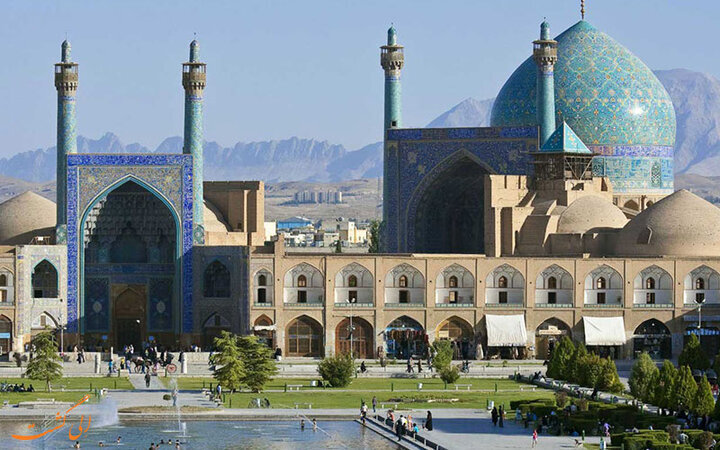Scaffolding removed from Imam Mosque after 14-year restoration

TEHRAN - The scaffolding surrounding the magnificent dome of the 17th-century Imam Mosque in Isfahan has finally been removed after 14 years of meticulous restoration work.
On Thursday, Isfahan province’s tourism chief, Amir Karamzadeh announced the completion of the restoration of Imam Mosque’s intricate tilework.
Speaking to reporters, the official said the mosque’s dome underwent restoration after distortions in its southeastern section were detected.
“This restoration project began after a thorough damage assessment and commenced in 1389 (2010), continuing until this year,” he said.
The main part of the restoration was completed in 1401 (2022), leading to the partial removal of the scaffolding. However, subsequent expert evaluations identified further distortions at the end of the dome’s sixteenth section, necessitating additional work.
“In the last few days, the restoration of the decorations and the correction of distortions in the sixteenth section have been completed,” the official said.
“As a result, this magnificent historical dome has been freed from the scaffolding after 14 long years.”
The ongoing restoration work will now focus on the dome’s belt.
The Imam Mosque dome, adorned with over 500,000 tiles, is recognized as the largest tiled dome among historic mosques worldwide, the official added.
Cultural heritage enthusiasts say the removal of the scaffolding marks a significant milestone in preserving and showcasing the architectural splendor of the Imam Mosque, a jewel of Persian Islamic architecture.
A masterpiece of Islamic architecture, the Imam Mosque stands tall at the southern end of UNESCO-registered Naghsh-e Jahan Sq. (Imam Square) in Isfahan, central Iran. The majestic place of worship is impressive because of its sheer size and incredible decoration.
Originally named Masjed Shah (“the Shah Mosque”), its construction began in 1611 during the rule of the Safavid King Shah Abbas the Great, who reigned from 1588 to 1629. The mosque’s topmost dome was completed in the last year of his sovereignty.
Its interior and exterior walls are fully decorated with a polychrome, mostly dark blue, glazed tile revetment above a continuous marble dado.
Many believe each of the mosque’s parts is a work of genius that leaves a lasting impression. This place of devotion owes its splendor mostly to being covered with seven-color mosaic tiles and symmetrical calligraphic inscriptions.
Imam Square is hemmed on four sides by magnificent buildings: to the east, the Sheikh Lotfollah Mosque; to the west, the palace of Ali Qapu; to the north, the portico of Qeysarieh; and to the south, the eminent Imam Mosque.
“The square was at the heart of the Safavid capital’s culture, economy, religion, social power, government, and politics. Its vast sandy esplanade was used for celebrations, promenades, and public executions, for playing polo and for assembling troops,” according to the UNESCO website.
Isfahan has long been nicknamed as Nesf-e-Jahan, which translates into “half the world”, meaning seeing it is relevant to see the whole world. The city is home to many versatile artisans who underpin its reputation as a living museum of traditional culture.
AM
Leave a Comment